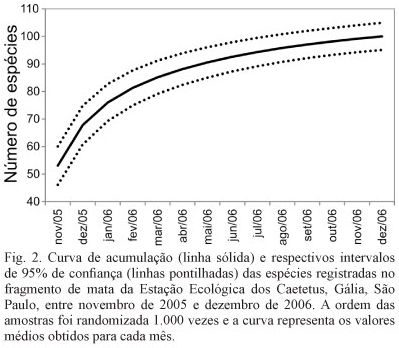Few studies have evaluated long-term changes in avian abundance in forest remnants. To compare both species richness and abundance of the bird community in a forest fragment located in the municipality of Gália, state of São Paulo, southeastern Brazil, we surveyed forest birds using transect counts. We compared our results with a survey conducted 30 years earlier at the same locality and further classified bird species according to their food habits to eventually predict fluctuations of specific abundance. Although species with population declines predominated in the community, all trophic categories had species which increased their abundances. Most species prone to move around remnants decreased in abundance. We suggest that, regarding specific abundances, trophic categories may be equally affected as a result of fragmentation processes and that the forest regeneration of this remnant may have led to the loss of edge species. Species that suffered from abundance loss during this time period may become locally extinct in the near future.
Caetetus Ecological Station; fragmentation; species abundance; transect counts; trophic categories





